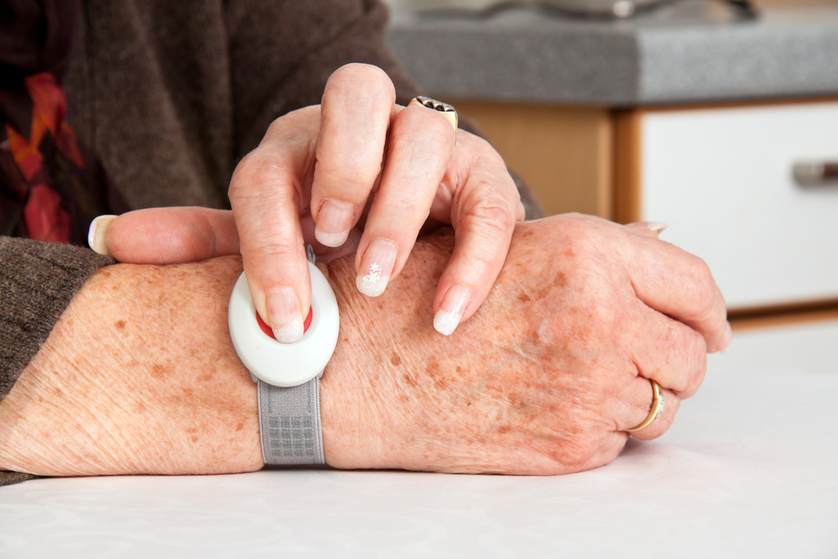
Most senior citizens prefer the familiarity of living in their own homes as they grow older rather than in nursing homes. The number of citizens over the age of 60 is likely to double between 2012 and 2050 according to the United States Census. The majority have concerns about getting medical help, particularly if they live alone. Developments in medical alert systems or emergency response technologies (ERTs) have made it progressively easier for elderly people to maintain more independence in their lifestyles. The most common cause of death due to injury after the age of 75 is falling over. According to Andrew Carle, executive-in-residence at the Program in Senior Housing Administration at George Mason University, over one-third of people over the ages of 65 and older fall each year and the percentage goes up to over half for people aged 85 and older. With an ageing population, the demand for medical alerts is growing as is the competition between companies within the industry.
Most medical alarm systems nowadays include a pendant or are similar to a key chain so they can be worn on the body. They possess a Help button that automatically connects the wearer to an emergency dispatch member when pressed. The better ones can actually detect a fall by sensing sudden moves and impacts which automatically trigger a call to the company’s emergency dispatcher. The dispatcher can then call the wearer to check on their condition and also connect them to emergency services if necessary. These features can make a huge difference because if an individual is unconscious or cannot call for help for any reason, the device takes over.
Newer devices are more discreet and use wireless instead of radio frequency technology, enabling them to work everywhere and not just within the home. There are many varieties of medical alert systems available to choose from so the question arises what to look for in a good device? Some of the most important criteria include the following:
- The device should be specific to the user’s disability or requirement. For example, a stroke survivor may need a device he or she can activate with one hand.
- It offers a choice of a wristband and/or neck pendant. Cords worn around the neck are dangerous due to the risk of strangulation while wristbands may causes rashes or feel uncomfortable for some people. Individuals need to be able to choose the type which is most comfortable for them.
- It includes Help buttons that can be wall-mounted near the floor in several rooms, In the event of an individual falling and not having a medical alert device on their person, they might still be able to summon help if the Help button is close at hand.
- It offers several choices of whom to contact in the event of an emergency, whether it is friends, neighbours, or family one the one hand or medical emergency staff on the other.
- It has a battery backup in case of a power failure.
- The base station should be contactable from anywhere on the owner’s property—whether outside or inside
- It is not mandatory for medical alert call centre representatives to be medical professionals and many companies claim that their care representatives have been approved by an independent safety science company or have some other kind of certification e.g. Five-Diamond by the CSAA. But the supplier should ideally have its own monitoring centre and own trained emergency personnel.
- The supplier should have national coverage.
- The device should ideally be standalone and not part of a suite of offerings which would raise costs unnecessarily. Nowadays, the best standalone devices offer a complete solution in themselves without the need for any accessories.
- Great customer service is a must with a prompt and courteous response to emails and phone calls. Pricing should be transparent with no confusing terms of service or hidden fees. The website should be helpful and informative, and the ordering process smooth.
- Brands that include landline, cellular, and mobile units are more useful than ones which don’t include all three. This is because users then have access to a variety of mediums if they need help and are not dependent on just one. Also, waterproofing protection for any medical alert systems is a big plus. People are most susceptible to slipping and falling in the bathroom which is why having waterproof protection for any medical alert system is so important.
- The devices should be both easy to set up and operate and easy to cancel if they prove unsuitable. Companies that try to lock their customers into contracts should be avoided where possible. Ideally the equipment should just need to be plugged in for ease of use without requiring a technician to install or set it up.
There are many good devices that are worthy of a mention. They include Bay Alarm Medical, MobileHelp, Philips Lifeline, LifeFone, Acadian On Call, and Medical Guardian. Bay Alarm is known for its excellent customer service, MobileHelp uses cutting edge technology and manufactures its own equipment in-house, and Medical Guardian is perhaps the best known. All of them have pros and cons but all are among the best available on the market.







